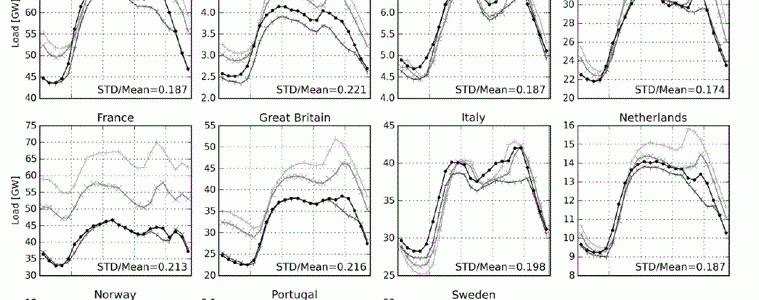
Energy flexible building managing models
Already today buildings can be realised in the nearly-zero and plus energy standard. These buildings achieve extremely low energy demands and low CO2 emissions and can be operated economically. For this reason, the motivation in the CRAVEzero project is not only based on the energy characteristics of buildings, but also on their life-cycle costs and building operation, which is supporting the large-scale integration of fluctuating renewable energies in the building itself, but also in higher-level electricity grids. For the integration of fluctuating renewable energies (i) the integration and intelligent operation of storages (electric and thermal) as well as smart operation and management strategies are needed.
CRAVEzero_D43_Energy_flexible_building_managing_modelsIn the first part of the deliverable the theoretical background of the interaction between buildings and grids and flexibility options (technical, operational) are described. Furthermore, existing and new KPIs to analyse the flexibility of a building as well as the ability to integrate renewable energies in the building and higher-level grids are introduced. The assessed KPIs are:
- Self-consumption
- Autarky rate
- Grid-supportiveness coefficient (GSC)
- Smart readiness indicator (SRI)
In contrast to the first three KPIs, the latter is a based on a more qualitative approach compared to the others, which have a more quantitative character. In order to quantify the effect of different technology sets on the quantitative KPIs the two case studies “Brussels” located in Germany and “Moretti More” located in Italy are analysed in detail. Furthermore, the smart readiness of the buildings as they are built / planned is analysed based on a methodology currently discussed in Europe.
With an increasing complexity of the technology sets in buildings, but also of the requirements for the operation (support of grid stability, on-site integration of renewables, increased comfort requirements) a robust and reliable operation is essential. The process of continuous commissioning is one approach to increase the reliability and robustness of the planning, construction, commissioning and operation of buildings. As these factors are also essential for a flexible operation of a building the process of continuous commissioning is also described in this deliverable.
As a major goal of the CRAVEzero project is the cost reduction throughout the life-cycle of a building, possible cost savings are also assessed. As the building management models are mainly addressing the operational phase of a building, possible cost savings in this phase of the life-cycle are the focus of this deliverable. A detailed assessment of the investment and life-cycle costs of different technology sets are described in the publications of Work Package WP06.
In the following, some main results and findings are presented:
- For the integration of renewable energies in buildings as well as a flexible building operation to support the integration of renewables in higher level grids different storage possibilities (thermal and electric) are needed in the building
- The technology concepts for increasing the self-consumption as well as the GSC with respect to electricity prices and the residual load are comparable and optimising / increasing one of the KPIs also positively influences the others. However, aspects / technologies increasing the autarky rate of a building are decreasing the other KPIs; one can conclude that an increasing autarky is negative for an improved / optimised building-grid interaction, especially when the goal is to support the broad scale integration of renewable energies on national / European level.
- If technologies for an improved building-grid interaction are installed in buildings, it is necessary to change the current operation mode (focus on heat demand) and proved possibilities to integrate additional (external) signals in control strategies
- For a market uptake of needed technologies, but especially for the broad implementation of the required control strategies adjustments in the energy markets are essential.
Download the full report here

